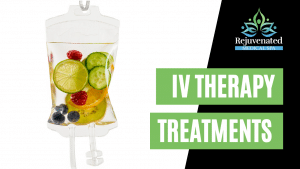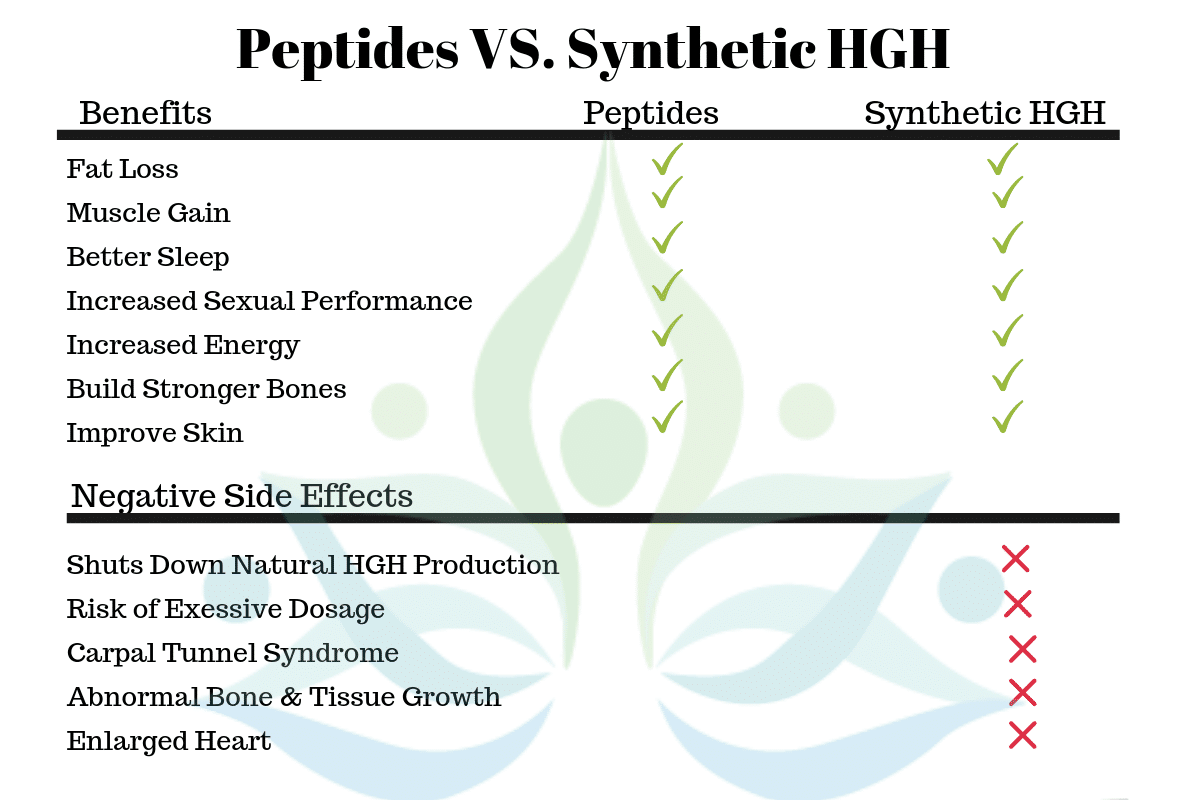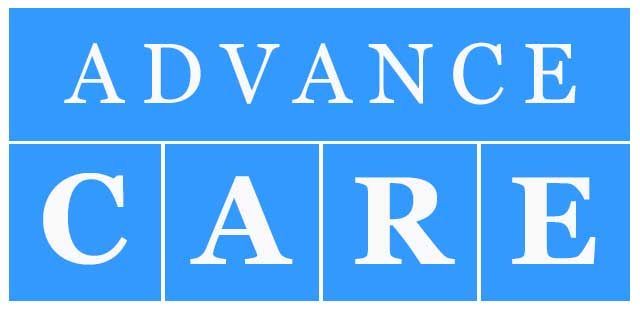Longevity, Anti-aging, and Improving our Health Span: Science, Obstacles, Research and a Practical Approach Nick Gentry, M.D.
As many of you know, I am constantly looking for ways to make my patients look and feel younger, but I also want to help them live longer lives with less risk of disease. Some people use a term “healthspan” meaning the span of time that you are healthy and functional. This blog is about prior and current research in longevity and healthy aging.
From 1500 to 1800 the life expectancy in Europe ranged between 30 to 40 years (2). This was largely due to much higher infant mortality, unhygienic conditions and uncontrolled disease spread. Starting in the 1800s, life expectancy increased dramatically in developed countries. The development of clean water, better nutrition, vaccines, medical procedures and antibiotics have allowed a life expectancy of about 77 years. Interestingly, for the first time since 1915-1918 (World War I and Spanish Flu) life expectancy has recently decreased (4).
The reasons for this appear to be partially due to drug overdoses, liver disease, increased suicide rates in adults aged 25-64 (3). Our highly processed and high sugar diets likely play a large role in this as well. There is also a disproportionate increase in chronic diseases compared to the increase in average life expectancy. For instance, the average life expectancy in the U.S. was 73.25 years in 1980 and increased to 78.94 year in 2015 (4). In that same period, the prevalence of diabetes increased from 5.5 million in 1980 to 23.4 million in 2015 (5). That is a 425% increase in 40 years! This is a very complex topic but one that I wanted to begin to address in this blog by discussing proposed causes of accelerated aging and ways to possibly slow these processes.
What is aging?
Aging is not just increasing the number of year on Earth. The effects of aging are readily noticed in all animals. In humans (and other mammals), the development of cataracts, weakened muscles, loss of hearing, reduced cardiopulmonary reserve, not to mention the visual evidence of aging such as sagging skin, wrinkles etc. all eventually contributing to the loss of function and eventual death.
On a cellular level, damaged and aging cells must either enter a dormant period of slowed division called senescence or they are flagged for cellular death through a process called apoptosis. Without these processes, the cells would become cancerous. The processes of why and how this occurs are quite complex and beyond the scope of this blog. To over simplify the process, when cells become damaged or their telomeres (structures at the ends of our DNA strands) become shortened they must die or stop dividing. However, the dormant (aka senescent) cells play a large role in the effects of aging. Senescent cells are basically the opposite of stem cells. Stem cells have unlimited potential to divide but senescent cells no longer divide. As more cells in our body become senescent, diseases such as arthritis, diabetes and other conditions begin to occur. Our cells are in a tough balancing act because without any senescence we would develop cancers but senescence is also a major cause of aging. Therefore, the challenge is how to slow the process of aging and delay senescence without totally eliminating it. Most current research in this area focuses on preventing damage to telomeres and reducing the damage of reactive oxidative species to cellular structures and DNA.
Obstacles In Longevity Research
I won’t spend a lot of time on these obstacles but it is worth mentioning a few of them so that you can have an idea of why more attention is paid to treating diseases rather than focusing on longevity and anti-aging.
- Big Pharma – pharmaceutical companies make money by treating chronic diseases. They want you to continue taking their drugs. Many pharmaceuticals focus on treating symptoms rather than curing the disease.
- The general public and many experts are concerned that if we significantly expand the current lifespan we will overpopulate the world. My opinion is that we should focus on improving our healthspan rather than lifespan.
- Aging is difficult to measure. Blood pressure can be measured, weight can be measured but the aging process cannot reliably be quantified. This also relates to the time obstacle as attempting to measure the signs of aging would take excessive amounts of time.
- Time: researchers are often held to finite timelines and a large portion of research is performed by doctoral students who want to obtain their degrees and complete their research. This frequently limits anti-aging research to organisms with short lifespans such as rodents and insects. Although this research is helpful, it does not necessarily translate to humans.
- Funding: it is much easier to raise funds for a specific and readily identified disease such as Alzheimer’s disease or cancer than general antiaging.
Longevity and Anti-aging Research
Hormone Replacement
Epidemiologic studies show that premenopausal women have a lower risk of cardiovascular disease than men, but this advantage gradually disappears at menopause and postmenopausal women actually have a higher risk of heart disease than men. This is believed to be due to estrogen. In addition to heart disease, osteoporosis and reduced immune function are related to menopause. These findings and quality of life are leading many physicians to use bioidentical hormone replacement therapy for their patients. The exact mechanisms of how estrogen reduces cardiovascular disease are not fully understood but estrogen may reduce oxidative stress on blood vessels. (15)
There is definitely research that correlates higher endogenous testosterone levels with improved overall survival as well as reduced mortality from heart disease and stroke (10). There is some evidence that replacing testosterone in men may improve overall lifespan (9). The main dilemma here is: A) are men with higher levels of testosterone healthier? B) does replacing the testosterone give men the same benefit in disease reduction and improved mortality? This is currently an area of interest for research.
My belief is that replacing hormones probably improves longevity and is even more likely to improve healthspan. Optimal hormones allow the body to build muscle more effectively, which can reduce obesity and improve functionality. Adequate testosterone is also needed for optimal glucose regulation. Estrogen has also been shown to have protective effects for cardiovascular disease. BHRT can also improve the quality of life so that we are more functional and feel better.
Antioxidants: Why do we need them and how do they work?
We may be able to reduce the production of reactive oxidative species (ROS), but we cannot totally eliminate their production. ROS are produced from: normal metabolism in our mitochondria, when our bodies are exposed to infectious pathogens, and from exposure to chemicals (food additives, pesticides, alcohol, drugs, pollution etc.). The body has mechanisms in place to help reduce ROS. Where we get into trouble is when oxidative stress occurs. Oxidative stress occurs when ROS overwhelm the cellular antioxidant defense systems (8). Oxidative stress results in damage to DNA, proteins, and lipids and can have dramatic effects such as cancer, cardiovascular disease and more.
Antioxidants counteract free radicals and they work in two different ways. Enzymatic antioxidants (such as superoxide dismutase) work by breaking down or converting harmful ROS into H 2 0 2 and then into water. Non-enzymatic antioxidants such as glutathione, Vitamin E, Vitamin C, beta carotene, lycopene, and others work by reacting with the radicals directly.
Yes, I do recommend that you can take supplements for antioxidants. However, I also encourage my patients to eat a variety of fresh fruits and vegetables. Food is fuel and medicine for our bodies. Fruits and vegetables, garlic, as well as pecans and walnuts all contain high levels of antioxidants that are beneficial for health. Each different color of fruits and vegetables contain different beneficial compounds called phytonutrients, so I encourage my patients to eat the rainbow of colors regularly to get a full range of benefits.
Exercise:
Exercise is good for our bodies in many different ways. You don’t have to be a marathon runner to benefit from exercise. Studies have shown that regular moderate physical activity can reduce hypertension, diabetes, abnormal cholesterol, heart disease, stroke, cancer, and more (18). While this is difficult to study, some research has shown a potential increase in lifespan up to 4.2 to 6.9 years (18). In addition to reducing risk of many diseases and increasing lifespan, exercise can help prevent injury and therefore nursing home placement. A large portion of people in nursing homes (aka skilled nursing facilities) are not placed there due to their medical complexity but due to their inability to perform their normal activities of daily living without assistance. There are many studies that show regular exercise in the elderly can reduce the risk of falls and fractures (19). I would strongly argue that the earlier you start strength training the better. We know that we lose muscle as we age, so it only makes sense that the more muscle you have in your 30s/40s/50s/60s will translate to higher muscle mass when you are elderly.
Caloric Restriction
Decades of research has demonstrated and dozens of experiments have replicated that caloric restriction in mice improves longevity (1). It turns out that feeding rats and mice 40% less calories reliably increases life expectancy. Keep in mind that these animals were not starved as they received adequate amounts of protein, fatty acids, nutrients and vitamins. Calorie restriction (CR) not only postpones diseases and death but also appears to slow the aging process. One might think that because the CR rodents are very lean that this is the reason they were healthier and lived longer. However, mice with an obesity mutation in their genes were placed on CR and still had increased lifespans despite being obese. Even more amazing is that the CR rodents were far more active even later in life and at their deaths showed less arthritis, cancer, and overall degenerative changes. Although the mechanisms of CR and improved longevity are not known, it is possible that the CR leads to reduced overall metabolic activity and therefore reduced production of reactive oxidative species. (1) Keep in mind that calorie restriction may not be appropriate for all lifestyles. For instance, those with very active lifestyles may require more protein and/or calories.
Metformin
Metformin is a medication that has been used in diabetes for decades. Based on the available evidence we conclude that the beneficial effects of metformin on aging and healthspan are primarily indirect via its effects on cellular metabolism and result from its anti-hyperglycemic action, enhancing insulin sensitivity, reduction of oxidative stress and protective effects on the endothelium and vascular function. Metformin has several known mechanisms of action but, even after 60 years of clinical use, the cellular mechanisms by which metformin exerts either its actions remain unclear.
The numerous beneficial health outcomes associated with the use of metformin to treat patients with type 2 diabetes (T2DM), together with data from pre-clinical studies in animals including the nematode, C. elegans, and mice have prompted investigations into whether metformin has therapeutic utility as an anti-aging drug that may also extend lifespan. Indeed, clinical trials, including the MILES (Metformin In Longevity Study) and TAME (Targeting Aging with Metformin), have been designed to assess the potential benefits of metformin as an anti-aging drug. Preliminary analysis of results from MILES indicate that metformin may induce anti-aging transcriptional changes; however, it remains controversial as to whether metformin is protective in those subjects without underlying insulin resistance.
Rapamycin
Rapamycin is the common name for the Pfizer-owned drug Rapamune (aka Sirolimus). It as first discovered as a compound produced by the bacteria Streptomyces rapamycinius, which was discovered in soil samples from Easter Island in 1964. It was initially researched for its antifungal activity but when taken regularly caused immunosuppressive effects so it was used as an immunosuppressive drug for organ transplant. It has also been used to slow cancer cell growth. (21) The dosing for immunosuppression and longevity are very different.
For longevity, Rapamycin works by shifting the body’s cellular biochemistry into a mode that mimics calorie restriction. This sets off a cascade of events, which can improve health, delay the onset of degenerative diseases, and increase longevity. Rapamycin treatment has increased lifespan from 25-60% in some of the species it has been tested on (yeast, worms, fruit flies, and mice). Even when given to 20 month old mice (considered elderly), the females lived 14% longer and the males lived 9% longer. This suggests that starting Rapamycin even late in life can increase longevity. There are currently studies looking at dogs, marmoset monkeys, and there is a group raising funding for a human study (PEARL trial). (21)
Autophagy is your body’s process of removing and recycling cellular parts. As cell components become damaged or dysfunctional. Autophagy acts to remove the dysfunctional proteins so that the cell can function properly and survive. This process can also remove cells infected with bacteria or viruses. (21)
mTOR or “mechanistic target of Rapamycin” was discovered as they were researching Rapamycin. mTOR drives many anabolic (aka building) processes in the cell and subsequently blocks the breakdown and recycling processes (aka autophagy). In times of nutrient excess, mTOR builds proteins and other structures. In times of nutrient absence, mTOR is inhibited and autophagy cleans up the damaged parts of the cell. This is believed to be why periods of fasting are beneficial for longevity. (21)
Other Considerations:
Peptides
A peptide is just a small protein. Most peptides have functions similar to hormones and mimic actions of those hormones in your body. For instance, Sermorelin, CJC-1295, and Ipamorelin all function to increase your production of growth hormone. Sermorelin and CJC-1295 have similar mechanisms and ipamorelin works a little differently so I typically combine either Sermorelin/Ipamorelin or CJC-1295/Ipamorelin. There are no studies to show that these peptides will increase longevity. I included these treatments more for their anti-aging effects such as improved skin tone, better recovery from exercise and injury, better sleep, stronger bones and more. As with hormones, better muscle tone and stronger bones reduces your risk of ending up in a long-term care facility.
NAD
Nicotinamide adenine dinucleotide (NAD or NAD+) is an important co-factor involved in numerous physiologic processes. These include metabolism, protein modification, and DNA repair. Many studies have shown that NAD levels decline with age and the deterioration of NAD metabolism increases several aging-associated diseases such as cancer, neurodegenerative diseases, and heart disease. Studies have also shown in rodents and worms that increasing NAD levels can extend the lifespan. (16) Other studies have shown that supplementing NAD+ or its precursor Nicotinamide Riboside (NR) can improve mitochondria function, reactivate stem cells in the brain and muscles and extend the lifespan of mice (17). I prefer to take NAD+ directly as an injection but it can also be supplemented by taking precursors of NAD+ such as: nicotinamide mononucleotide (NMN), Nicotinamide Riboside, or Nicotinic acid (aka vitamin B 3 or Niacinamide).
Practical Approach to Increasing Longevity and Healthspan:
I still believe that a good foundation for improving healthspan begins with my five pillars of health: nutrition, physical fitness, hormone optimization, adequate sleep, and stress reduction. By stress, I mean mental/emotional stress as well as cellular stress such as reactive oxidative species.
Nutrition
I encourage my patients to eat the rainbow of fruits and vegetables daily to obtain the antioxidant phytonutrients. Take supplemental antioxidants. Try periods of fasting such as 16 hours of fasting once or twice per week. Avoid a caloric excess.
Which Supplements Do I Recommend for Antioxidants?
- Vitamin C – I typically recommend 1000-2000mg per day and take up to 8000mg per day if I am sick.
- Glutathione or NAC – glutathione is our leading antioxidant and levels decline as we age. Glutathione can be difficult to absorb in supplement form so you need to either take liposomal glutathione (fairly expensive for a supplement) or take it as injectable form. Glutathione is produced from glycine, cysteine, and glutamine amino acids so it is important to have adequate supply of these in order to produce glutathione. I also like the inexpensive NAC, glutamine, and glycine, which are some of the amino acids used to produce glutathione by our body.
- Pure Cell – this is probably my favorite supplement that I take. It has a blend of antioxidants NAC, selenium, CoQ10, Alpha Lipoic Acid, turmeric, Ginseng, Green tea extract as well as the adaptogenic herb Ashwagandha. This supplement has a great variety of antioxidants and helps to support healthy mitochondrial function, which can improve energy.
- Vitamin D: Vitamin D has multiple roles including the regulation of bone and calcium. Deficiency of vitamin D is associated with an increased risk of age-related chronic diseases such as Alzheimer’s disease, Parkinson’s disease, cognitive impairment, and cancer. I recommend vitamin K with vitamin D to help direct calcium into bones rather than other places such as soft tissue or blood vessel walls.
Physical Fitness
I typically recommend a minimum of 160 minutes per week of moderate intensity exercise with at least 2 sessions of strength training per week. More exercise is likely even better, but this is a good starting goal for most people.
Hormone Optimization
Get your hormones checked. You do not necessarily have to start hormone replacement therapy. Depending on the patient, there may be ways to improve hormone production.
Sleep
Try to sleep a minimum of 7 hours each night. Some people may require 8-9 hours for optimal health.
Stress Reduction
Try reducing stress through mindfulness exercises and meditation to improve mental stress. Eliminate processed foods and try to buy more organic produce to reduce the chemical stressors consumed. Antioxidants also help to neutralize chemical stressors in your body (see above).
**Talk with a functional medicine or integrative medicine doctor about other options that may be beneficial for you specifically. Some of these treatments include: lifestyle management, IV therapy, peptide therapy, Metformin, and Rapamycin. These practitioners will also be able to customize some of the above treatments for you specifically.
References:
- Miller, Richard. Extending Life: Scientific Prospects and Political Obstacles. The Milbank Quarterly 2002 March; 80(1): 155-174
- https://www.verywellhealth.com/longevity-throughout-history-2224054
- Woolf, Steven H; Schoomaker, Heidi. Life Expectancy and Mortality Rates in the United States, 1959-2017. Journal of the American Medical Association. 2019; 322(20).
- https://www.statista.com/statistics/1040079/life-expectancy-united-states-all-time/
- https://www.statista.com/statistics/240883/number-of-diabetes-diagnosis-in-the-united-states/
- https://www.nature.com/scitable/topicpage/aging-and-cell-division-14230076/
- Shammas, Masood A. Telomeres, Lifestyle, Cancer, and Aging. Current Opinion in Clinical Nutrition and Metabolic Care. January 2011; 14(1): 28-34
- Ray, Paul D. et al. Reactive Oxygen Species (ROS) Homeostasis and Redox Regulation in Cellular Signaling. Cellular Signaling May 2012; 24(5) 981-990.
- Shores, Molly M. et al. Testosterone Treatment and Mortality in men with Low Testosterone Levels. The Journal of Clinical Endocrinology & Metabolism. June 2012. Vol 97 (6) p.2050-2058.
- Khaw, Kay-Tee et al. Endogenous Testosterone and Mortality Due to All Causes, Cardiovascular Disease, and Cancer in Men. Circulation 2007; 116: 2694-2701.
- Dato, Serena et al. The Genetics of Human Longevity: an Intricacy of Genes, Environment, Cultures, and Microbiome. Mechanisms of Ageing and Development Volume 165 Part B July 2017, p. 147-155.
- Ermolenko, Elena et al. Metformin Influence on the Intestinal Microbiota and Organism of Rats with Metabolic Syndrome. International Journal of Molecular Science 2022 June 20;23(12)6837
- LaMoia, Tracy E.; Shulman, Gerald I. Cellular and Molecular Mechanisms of Metformin Action. Endocrine Reviews. Volume 42, Issue 1, February 2021, p. 77-96 September 8, 2020.
- Ermolenko, Elena et al. Metformin Influence on the Intestinal Microbiota and Organism of Rats with Metabolic Syndrome. International Journal of Molecular Science 2022 June 20;23(12)6837
- Xiang, Du et al. Protective Effects of Estrogen on Cardiovascular Disease Mediated by Oxidative Stress. Oxidative Medicine and Cellular Longevity. Volume 2021 Article ID 5523516 15 pages.
- Yaku, Keisuke et al. NAD metabolism: Implications in Aging and Longevity. Science Direct: Aging Research Reviews. Volume 47, November 2018, pages 1-17.
- Zhang, Hongbo et al. NAD Repletion Improves Mitochondrial and Stem Cell Function and Enhances Lifespan in Mice. Science. Volume 352 no. 6292. April 28, 2016.
- Reimers, C. D. et al. Does Physical Activity Increasae Life Expectancy? A Review of the Literature. Journal of Aging Research. July 1, 2012; 243958
- Zhao, R. et al. The Efficacy and Safety of Exercise for Prevention of Fall-Related Injuries in Older People with Different Health Conditions, and Differing Intervention Protocols: a Meta-analysis of Randomized Controlled Trials. BMC Geriatrics 19, 341 2019.
- Mohammed, Ibrahim et al. A Critical Review of the Evidence That Metformin is a Putative Anti-Aging Drug that Enhances Healthspan and Extends Lifespan. Frontiers of Endocrinology. August 5, 2021; 12:718942.
- Pelton, Ross. Rapamycin: The Most Promising Life Extension Drug. Rapamycin, mTOR, Autophagy, & Treating mTOR Syndrome. Praktikos Books Copywright 2022.
- Karia, Mark A. et al. Vitamin D Promotes Protein Homeostasis and Longevity via the Stress Response Pathway Genes SKN-1, IRE-1, and XBP-1. Cell Reports. October 25, 2016. 17(5): 1227-1237







